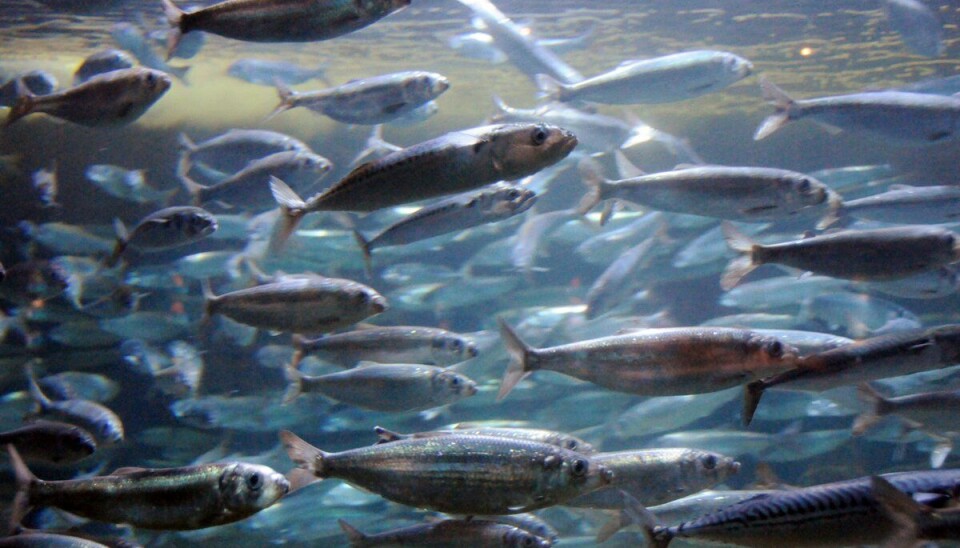THIS ARTICLE/PRESS RELEASE IS PAID FOR AND PRESENTED BY the Institute of Marine Research - read more

Spring-spawning herring were 'tricked' into spawning in autumn
When researchers manipulated the hours of daylight in an experimental setup, they got herring to spawn during the 'wrong' time of year.
Every year in February and March, large quantities of spring-spawning herring come to the northwest Norwegian coast to spawn. Most of the herring population in the North Sea, meanwhile, spawn in the autumn.
Autumn and spring spawning herring are the same species, but the researchers have found a few markers in the genome that discriminate them.
But what exactly triggers spring-spawning herring spawn in the spring? And what does it take for the spawning time to change? Marine scientists are now in the process of finding out.
“We wanted to test whether the spawning time is influenced by day length, which increases in the spring and decreases in the autumn,” says researcher Florian Berg at the Institute of Marine Research (IMR).
Long-term experiment
To find out, Berg and his colleagues conducted an experiment over three and a half years. They raised larvae of spring-spawning herring in two similar tanks:
- In one tank, they controlled the light so that it followed the natural daylight variation near Bergen where the herring were caught.
- In the second tank, the light regime was postponed by six months - so that the 'days' became longer in the tank in parallel with them becoming shorter in nature, and vice versa.
- Temperature, food supply and other environmental conditions were otherwise identical in the two tanks, so that the researchers could isolate the effect of daylight variation.
Waiting for spring
“By manipulating the photoperiod, herring that hatched in spring were now growing up under autumn light conditions. Therefore, we were interested in seeing if they became mature after three years, as usual, or after three and a half years, when they experienced their third ‘spring’,” Florian Berg explains.
The result? The herring that was 'tricked' waited until the days in the tank became longer before they were ready to spawn. The spawning period was thus postponed by six months.
In other words, it seems that the photoperiod – the length of the day – sets the time for the biological clock of the herring.
Unaffected by spring odor
The results enabled the researchers to reject an alternative hypothesis: that the “smell of spring” in the sea gives the herring a signal that it is time to spawn.
The tanks were supplied with water from the fjord, where the salinity and nutrient content of the water changes with the seasons. The signs of spring in the water thus arrived while the days in the tank became shorter.
“If the herring spawned while it was spring outside, even though it was autumn in the tank, such chemical signals could have provided an explanation. But that was not what we saw,” Berg states.
Shows that spawning time is climate robust
The research can shed light on how herring will cope under changing environmental conditions in the future.
“This shows that Norwegian spring-spawning herring, which is very important for the Norwegian fisheries, will always spawn in the spring, even if climate change results in increased temperatures. Herring spawning depends on the daylight – which will always follow the seasonal variation, even with climate change,” says Florian Berg.
“Their dependence on daylight in early spring also means that there is a natural limit to how far north the herring stock can expand due to increasing ocean temperatures,” he adds.
This is the first time such an extensive attempt to manipulate the length of day has been made with herring. The researchers are already well underway with another similar experiment, where they also have different temperatures in the two herring tanks. This will be able to confirm whether the temperature also affects the spawning of the herring, in addition to the photoperiod.
Researchers have previously found that herring grow less in warmer seas.
Reference:
dos Santos Schmidt et al. Is it possible to photoperiod manipulate spawning time in planktivorous fish? A long-term experiment on Atlantic herring Journal of Experimental Marine Biology and Ecology, 552 (2022) DOI: 10.1016/j.jembe.2022.151737
See more content from the Institute of Marine Research:
-
These whales have summer jobs as ocean fertilisers
-
Have researchers found the world’s first bamboo coral reef?
-
Herring suffered collective memory loss and forgot about their spawning ground
-
Researchers found 1,580 different bacteria in Bergen's sewage. They are all resistant to antibiotics
-
For the first time, marine researchers have remotely controlled an unmanned vessel from the control room in Bergen
-
New discovery: Cod can adjust to climate change – from one generation to the next





































